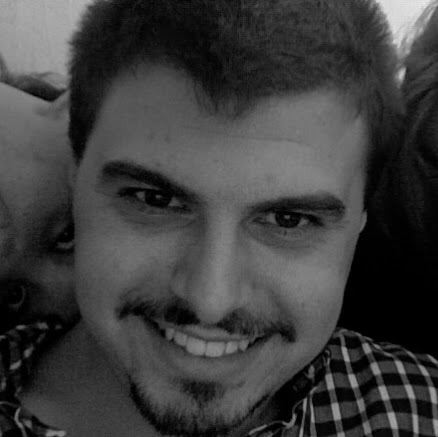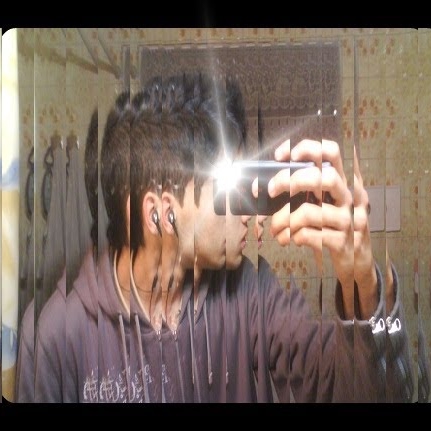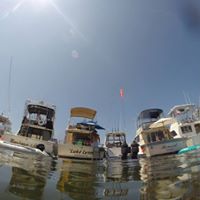Alan Wenzel Lucas
age ~33
from Roanoke, VA
Alan Lucas Phones & Addresses
- Roanoke, VA
- Seattle, WA
- Waltham, MA
- Mount Vernon, ME
Work
-
Company:Simplicity orthopedic sltns
-
Address:1050 Winter St # 1000, Waltham, MA 02451
-
Phones:9786230033
-
Position:President
-
Industries:Surgical and Medical Instruments and Apparatus
Resumes

Alan Lucas
view source
Alan Lucas
view source
Alan Lucas
view source
Alan S Lucas
view source
Alan Lucas
view sourceLocation:
United States
License Records
Alan P Lucas
License #:
FMC00426 - Expired
Category:
Food Safety
Issued Date:
Jan 25, 1994
Expiration Date:
Jan 31, 2003
Type:
Certified Food Safety Mgr
Isbn (Books And Publications)


Nutritional Needs of the Preterm Infant: Scientific Basis and Practical Guidelines
view sourceAuthor
Alan Lucas
ISBN #
0683084259






Name / Title
Company / Classification
Phones & Addresses
President
Simplicity Orthopedic Sltns
Surgical and Medical Instruments and Apparatus
Surgical and Medical Instruments and Apparatus
1050 Winter St # 1000, Waltham, MA 02451
Website: simplicityortho.com
Website: simplicityortho.com
Vice President - Sales And Marketing
Implant Sciences Corporation
Search, Detection, Navigation, Guidance, Aero...
Search, Detection, Navigation, Guidance, Aero...
600 Research Dr Ste 1, Wilmington, MA 01887
President
Simplicity Orthopedic Sltns
Surgical & Medical Instrument Mfg
Surgical & Medical Instrument Mfg
1050 Winter St #1000, Waltham, MA 02451
9786230033
9786230033
Principal
CEO Medtech Resources LLC
Management Consulting Services
Management Consulting Services
30 Boston Post Rd, Wayland, MA 01778
Vice President - Sales And Marketing
Implant Sciences Corp.
Defense & Space · Mfg Sensors and Systems · Mfg Search/Navigation Equipment
Defense & Space · Mfg Sensors and Systems · Mfg Search/Navigation Equipment
500 Research Dr UNIT 3, Wilmington, MA 01887
600 Research Dr, Wilmington, MA 01887
9787521700, 7812460700
600 Research Dr, Wilmington, MA 01887
9787521700, 7812460700
Us Patents
-
System And Method For A Tissue Resection Margin Measurement Device
view source -
US Patent:20220273340, Sep 1, 2022
-
Filed:Feb 1, 2022
-
Appl. No.:17/590216
-
Inventors:- Boston MA, US
- Brookline MA, US
Alan D. LUCAS - Brookline MA, US -
International Classification:A61B 17/34
A61B 34/10
A61B 34/20
A61B 90/00
A61B 17/068
A61B 17/32 -
Abstract:Embodiments of the invention provide a system and method for resecting a tissue mass. The system for resecting a tissue mass includes a first sensor for measuring a signal corresponding to the position and orientation of the tissue mass. The first sensor is dimensioned to fit inside of or next to the tissue mass. The system also includes a second sensor attached to a surgical instrument configured to measure the position and orientation of the surgical instrument. A controller is in communication with the first sensor and the second sensor, and the controller executes a stored program to calculate a distance between the first sensor and the second sensor. Accordingly, visual, auditory, haptic or other feedback is provided to the clinician to guide the surgical instrument to the surgical margin.
-
Direct Endoluminal- And/Or Endovascular-Illumination Systems And Methods Of Use Thereof
view source -
US Patent:20220175233, Jun 9, 2022
-
Filed:Jul 5, 2021
-
Appl. No.:17/305330
-
Inventors:- Denver CO, US
Alan Lucas - Brookline MA, US -
International Classification:A61B 1/06
A61B 1/00
A61B 1/015
A61B 1/05
A61B 1/018 -
Abstract:In some embodiments, endoscopy systems and/or methods of using endoscopy systems are described. In some embodiments, an endoscopy system comprises a shaft having an image sensor within a distal tip of the shaft. The shaft can have an expandable cuff disposed on an outer surface of the shaft. The expandable cuff can be moved from a contracted configuration to a deployed configuration. In the deployed configuration, an outer surface of the expandable cuff can inhibit, reduce, or prevent fluid (e.g., blood) flow in the vessel. Inhibiting or preventing the fluid flow can permit direct visualization of the interior of the vessel by the image sensor without interference from the fluid.
-
System And Method For A Tissue Resection Margin Measurement Device
view source -
US Patent:20210386449, Dec 16, 2021
-
Filed:Oct 16, 2020
-
Appl. No.:17/420528
-
Inventors:- Boston MA, US
- Brookline MA, US
Alan D. LUCAS - Brookline MA, US -
International Classification:A61B 17/32
A61B 34/20
A61B 34/10
A61B 17/068
A61B 90/00 -
Abstract:Embodiments of the invention provide a system and method for resecting a tissue mass. The system for resecting a tissue mass includes a first sensor for measuring a signal corresponding to the position and orientation of the tissue mass. The first sensor is dimensioned to fit inside of or next to the tissue mass. The system also includes a second sensor attached to a surgical instrument configured to measure the position and orientation of the surgical instrument. A controller is in communication with the first sensor and the second sensor, and the controller executes a stored program to calculate a distance between the first sensor and the second sensor. Accordingly, visual, auditory, haptic or other feedback is provided to the clinician to guide the surgical instrument to the surgical margin.
-
Direct Endoluminal- And/Or Endovascular-Illumination Systems And Methods Of Use Thereof
view source -
US Patent:20200315440, Oct 8, 2020
-
Filed:Jun 22, 2020
-
Appl. No.:16/908457
-
Inventors:- Denver CO, US
Alan Lucas - Brookline MA, US -
International Classification:A61B 1/06
A61B 1/00
A61B 1/015
A61B 1/05
A61B 1/018 -
Abstract:In some embodiments, endoscopy systems and/or methods of using endoscopy systems are described. In some embodiments, an endoscopy system comprises a shaft having an image sensor within a distal tip of the shaft. The shaft can have an expandable cuff disposed on an outer surface of the shaft. The expandable cuff can be moved from a contracted configuration to a deployed configuration. In the deployed configuration, an outer surface of the expandable cuff can inhibit, reduce, or prevent fluid (e.g., blood) flow in the vessel. Inhibiting or preventing the fluid flow can permit direct visualization of the interior of the vessel by the image sensor without interference from the fluid.
-
Endoscopy Systems And Methods Of Use Thereof
view source -
US Patent:20200155190, May 21, 2020
-
Filed:Jun 28, 2018
-
Appl. No.:16/627676
-
Inventors:- Denver CO, US
Alan Lucas - Brookline MA, US -
International Classification:A61B 17/32
A61B 1/00
A61B 1/018
A61B 1/07
A61B 1/317 -
Abstract:In some embodiments, endoscopy systems and/or methods of using endoscopy systems are described. In some embodiments, an endoscopy system comprises one or more of piezoelectric elements or hooked blades. In some embodiments, stylets for use with an endoscopy system are described. In some embodiments, the endoscopy systems are useful for orthopedic procedures. In some embodiments, the endoscopy systems are useful for arthroscopic procedures.
-
Direct Endoluminal- And/Or Endovascular-Illumination Systems And Methods Of Use Thereof
view source -
US Patent:20200077876, Mar 12, 2020
-
Filed:Feb 14, 2019
-
Appl. No.:16/276295
-
Inventors:- Denver CO, US
Alan Lucas - Brookline MA, US -
International Classification:A61B 1/06
A61B 1/00
A61B 1/015
A61B 1/018
A61B 1/05 -
Abstract:In some embodiments, endoscopy systems and/or methods of using endoscopy systems are described. In some embodiments, an endoscopy system comprises a shaft having an image sensor within a distal tip of the shaft. The shaft can have an expandable cuff disposed on an outer surface of the shaft. The expandable cuff can be moved from a contracted configuration to a deployed configuration. In the deployed configuration, an outer surface of the expandable cuff can inhibit, reduce, or prevent fluid (e.g., blood) flow in the vessel. Inhibiting or preventing the fluid flow can permit direct visualization of the interior of the vessel by the image sensor without interference from the fluid.
Plaxo

Alan Lucas
view sourceBrookline, MAPartner at CMC Consulting Group Boston Past: President & CEO at Simplicity Orthopedics, Inc A senior level executive in medical devices and surgical implants for over 20 years.
PROFESSIONAL EXPERIENCE
General Management: Active participant with... A senior level executive in medical devices and surgical implants for over 20 years.
PROFESSIONAL EXPERIENCE
General Management: Active participant with senior management and the Board of Directors in enhancing investor value, including successful fundraising, creation and implementation of...

alan lucas
view sourcelove a good laugh

Alan Lucas
view sourceRhino Risk

Alan Lucas
view sourceBT
Classmates

Alan Lucas
view sourceSchools:
William Allen High School Allentown PA 1979-1983
Community:
Alice Archer, Kate Hillenbrand

Alan Dunbar (Lucas)
view sourceSchools:
Valley Cottage Elementary School Valley Cottage NY 1947-1951, Sea Cliff High School Sea Cliff NY 1956-1959
Community:
Susan Howell, Francis Schweers, Robert Peterson

Alan Lucas
view sourceSchools:
Hardy Junior High School Jackson MS 1961-1965, Central High School Jackson MS 1966-1968
Community:
Gene Norton, Beverly Maddox, Rod Windham, Reba Phillips, Randall Goldman

Alan Lucas
view sourceSchools:
St. Christopher School Rocky River OH 1956-1960, Cossitt Avenue Elementary School La Grange IL 1959-1961

Alan Lucas
view sourceSchools:
Miami Military Academy Miami FL 1962-1966
Community:
Ivan Ortiz, Willis Baker, Sherryl King, Robert Mark

Alan Lucas
view sourceSchools:
Memorial Park Elementary School Rockland MA 1984-1989, Rockland Junior High School Rockland MA 1989-1992
Community:
Olga Rivera, Cindy Johnston, Andrea Carey, Keri Hanson, Sherri White, Chrissy Terry, Sarah Henderson, Melissa Mouncey, Stephanie King, Lillian Sheriff

Alan Lucas, Ukiah High Sc...
view source
Memorial Park Elementary ...
view sourceGraduates:
Courtney MacDonald (1998-2002),
Peter Willard (1960-1965),
Greg Toner (1996-2000),
John Beadle (1990-1993),
Alan Lucas (1984-1989)
Peter Willard (1960-1965),
Greg Toner (1996-2000),
John Beadle (1990-1993),
Alan Lucas (1984-1989)
Youtube
Myspace

Alan Lucas
view sourceGoogleplus

Alan Lucas
Lived:
Brookline, MA
Boston, MA
Boston, MA
Work:
CMC Consulting Boston - Partner (2010)
CEO MedTech Resources - Managing Director (2008)
Simplicity Orthopedics, Inc - President & CEO
Implant Sciences Corp. - Vice President
ABIOMED Corp.
Vision Sciences Corp.
Kirschner Orthopedics, Corp.
Acufex MicroSurgical Corp.
CEO MedTech Resources - Managing Director (2008)
Simplicity Orthopedics, Inc - President & CEO
Implant Sciences Corp. - Vice President
ABIOMED Corp.
Vision Sciences Corp.
Kirschner Orthopedics, Corp.
Acufex MicroSurgical Corp.
Education:
Ithaca College

Alan Lucas
Lived:
Renton, Washington
Education:
Green River Community College

Alan Lucas
Work:
YouTube - Sdc
Education:
Ayrton senna da silva

Alan Lucas
Education:
Houston Community College System - Paralegal Technology

Alan Lucas

Alan Lucas

Alan Lucas

Alan Lucas

Alan Lucas
view source
Alan Lucas
view source
Alan Lucas
view source
Alan Lucas
view source
Alan Lucas
view source
Alan Lucas
view source
Theresa Allen Lucas
view source
Alan Lucas Richards
view sourceFlickr
Get Report for Alan Wenzel Lucas from Roanoke, VA, age ~33













